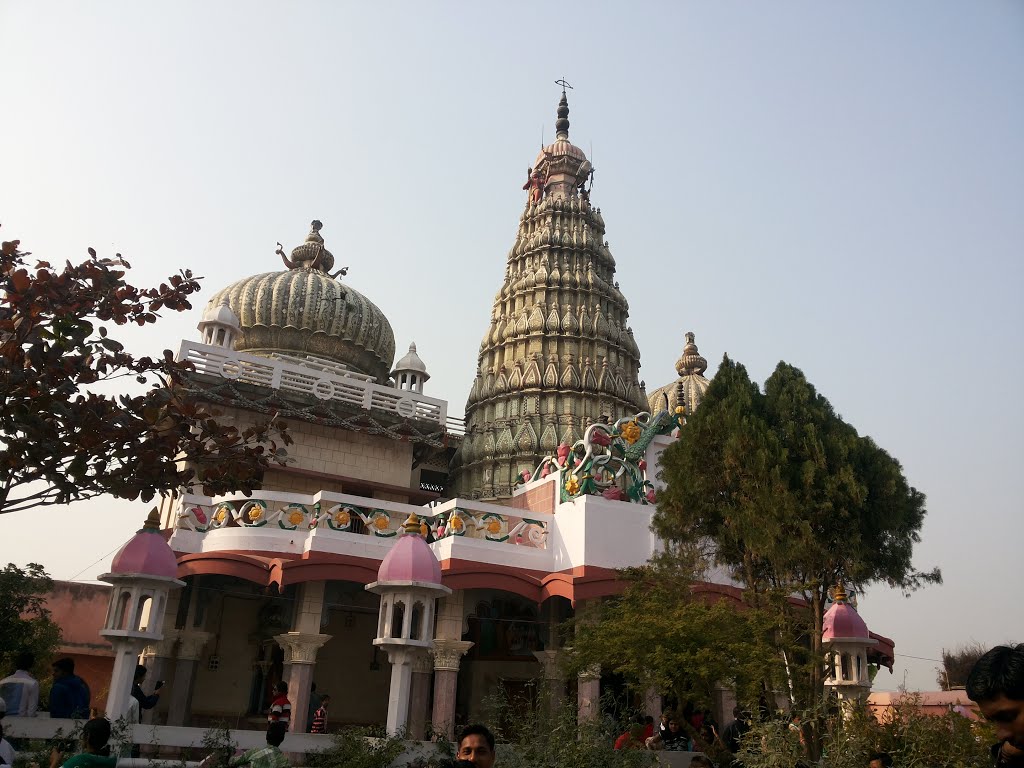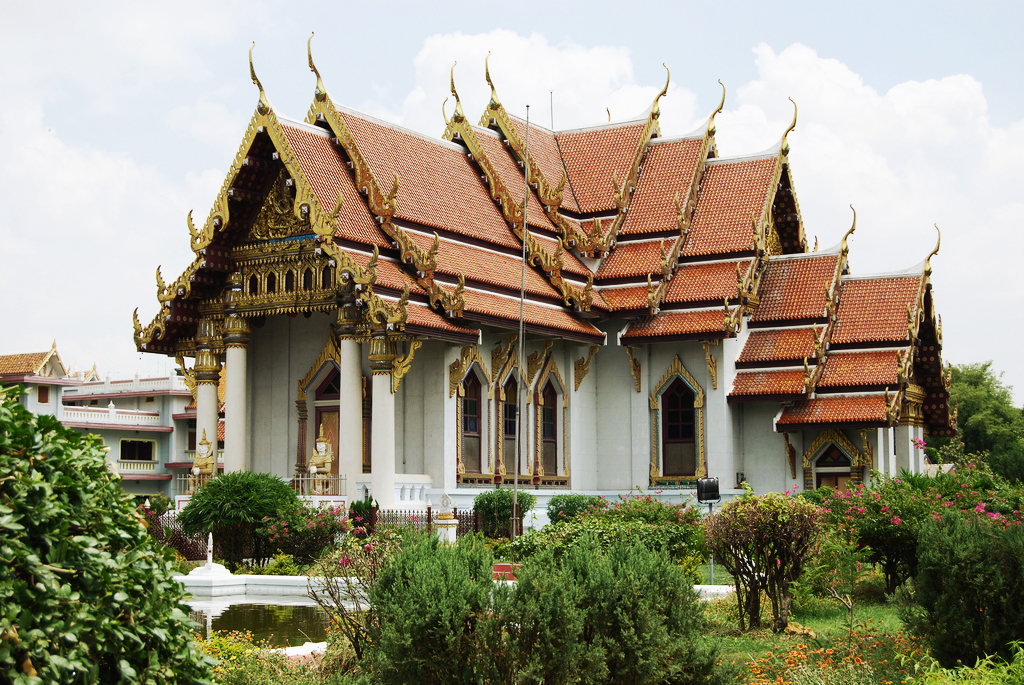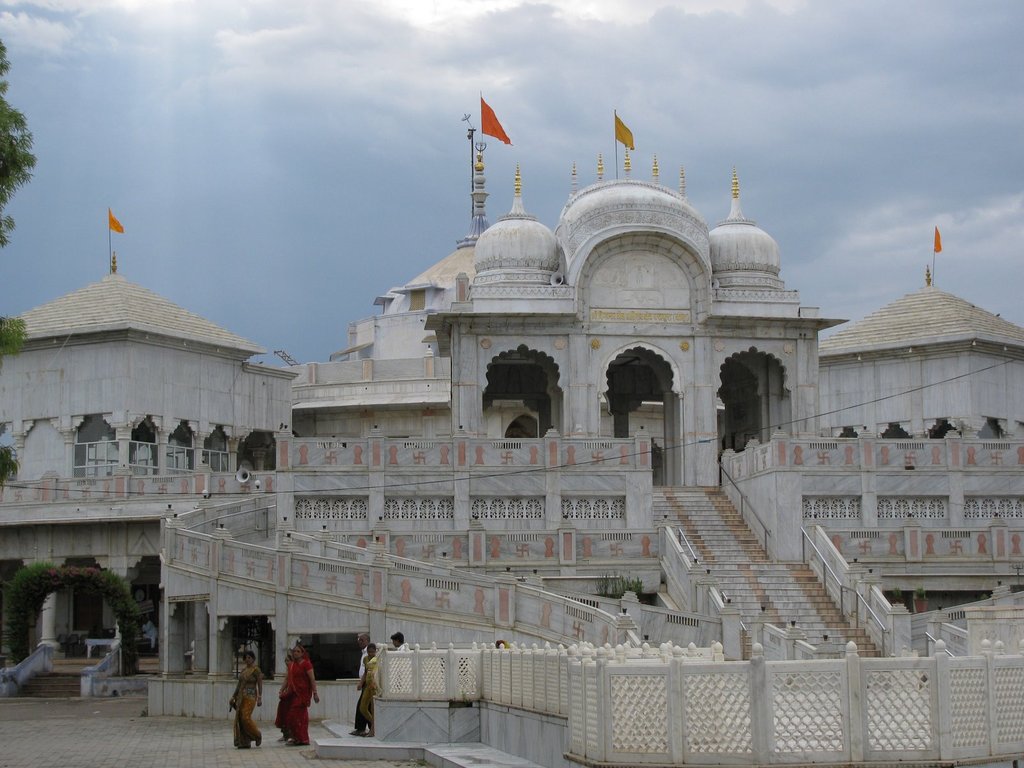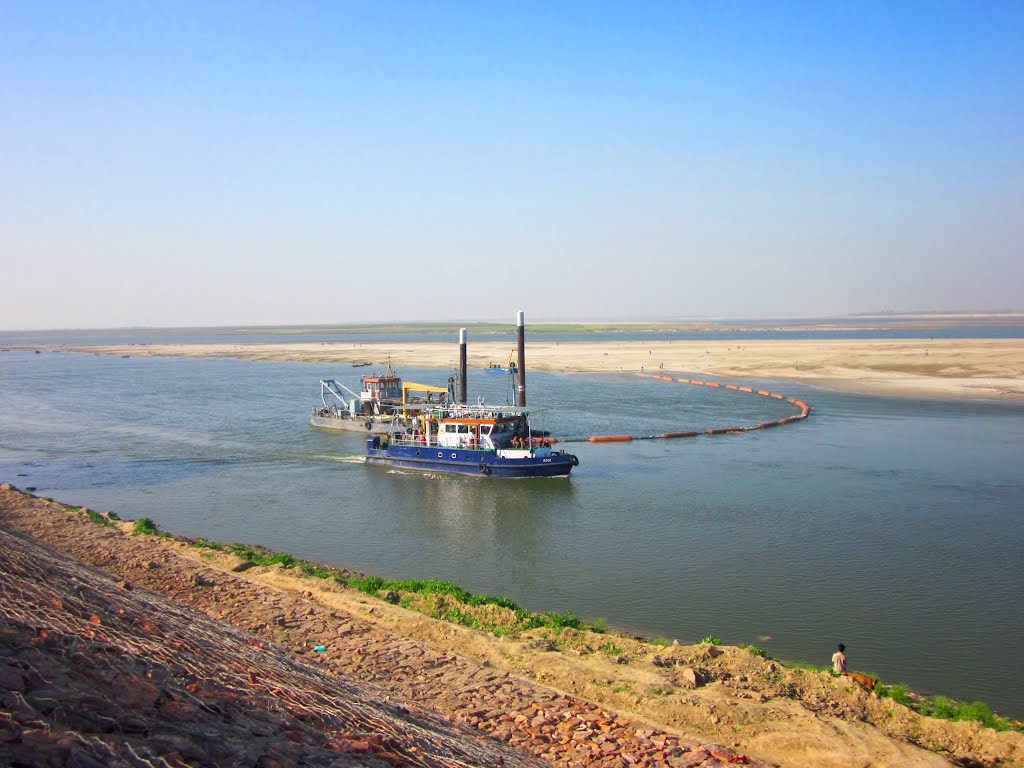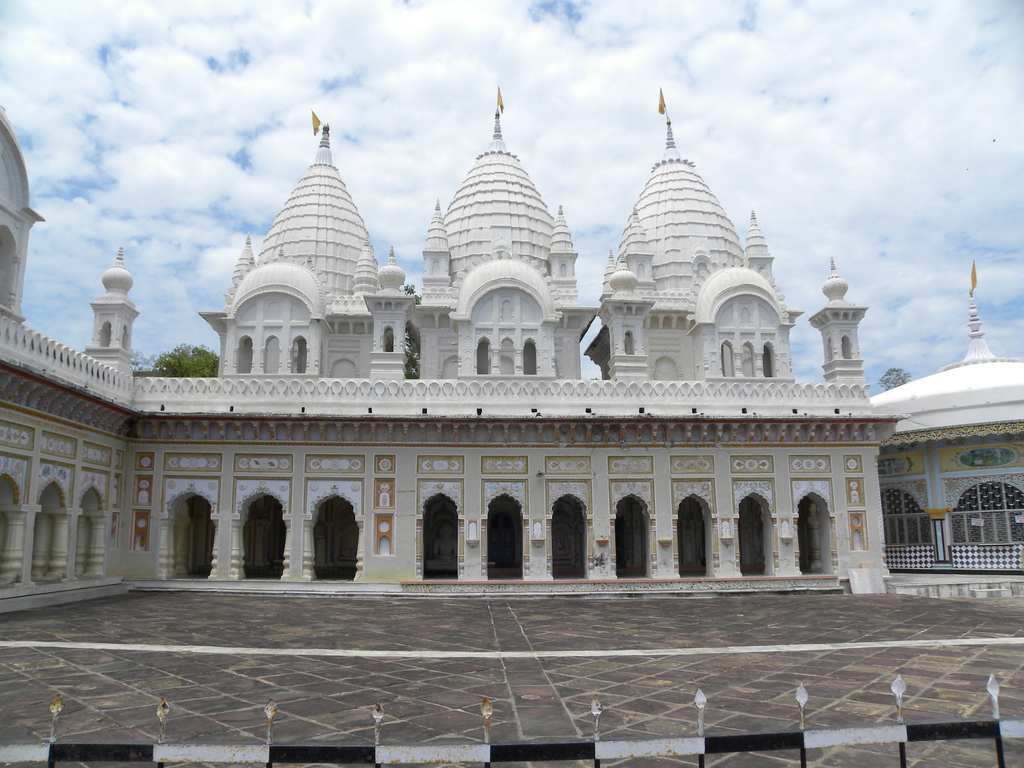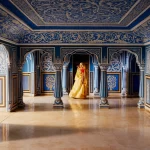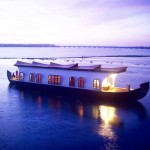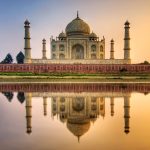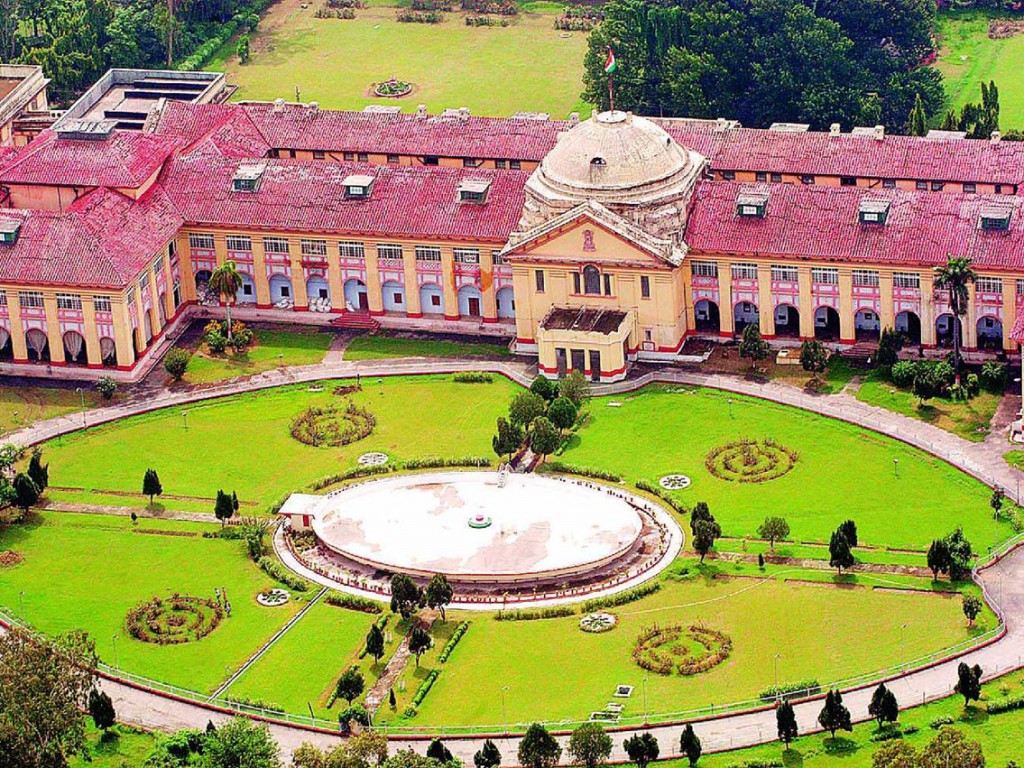
Patna Tourism and Travel Guide
History of Patna: PATNA at its earliest was a small straggling village with the name of Patali or Pataligrama as mentioned in Buddhist and Jaina traditions. Legend ascribes its origin to a magic stroke of a mythological king, Putraka, for his queen Patali.Patna However, history attests its creation by King Ajatshatru who was interested in shifting his capital from the hilly Rajagriha to a more strategic Patali, on the confluence of the ganga. The fact is further corroborated by Buddha who was impressed by the site when he saw the fort being erected here while he was passing by this village in the last year of his life. The enlightened one further prophesied a great future for the new found city but imultaneously predicted its ruin from flood, fued or fire. Patali, under different names like Pataligrama, Kusumpura, Pushpapura, Kusum Dhvaja, Padmavati, Patliputra, Azimabad and finally Patna, served various dynasties. However, it witnessed its golden days under the Mauryas in the 4th century B.C. which brought vividly to the forefront the basic and total unity of an all India empire for the first time.
The lofty buildings and parapets for which Patliputra was known, impressed Patanjali to the extent that he referred to them in his grammatical examples. Patliputra’s fame as a centre of learning outlived its political glory where scholars like Aryabhatta, Ashvaghosha, Chanakya, Panini, Sthalabhadra, Vatsyayana (author of Kamasutra) penned their
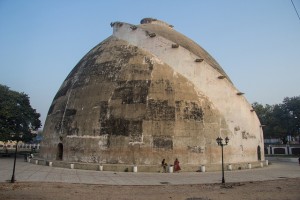
ideals and the great authors of the Shastras were examined. Greek ambassador, Magasthenese has left a vivid account of Patliputra which is further supplemented by Kautilya’s work and much later the Chinese travellers pass on their observation.
A strong sense of imagination is required to recreate the Mauryan Patliputra replete with multi-storeyed wooden buildings, palaces surrounded by parks and ponds. If we are to believe the Greek accounts, the royal parks were lined with evergreen trees, which neither grew old nor shed their leaves. The capital city with more than 500 towers and 64 Patnagates was surrounded by wooden palisade with loopholes for the arches. A ditch around the city served the dual purpose of defence as well as sewage disposal. Every street had its water courses serving as house drains that finally emptied into the moat. Any deposit that obstructed the passage was punishable by law. House owners were also required to have fire prevention elements and so were the streets provided with vessels of water and sand kept ready in thousands.
Agam Kuna: It was Ashoka who transformed the wooden capital into a stone construction around 273 B.C. This sudden change prompted Fa Hein, who visited India between 400-15 AD, believe that genni (demons) were commissioned to erect these massive stone structures, which are no human work. Mauryan architecture is one of the least known subjects in Indian history, though literary references to palace, forts, halls and stupas are aplenty but archaeological evidences are scarce. Kumrahar site at Patna is associated with the ancient Palace site of Patliputra.
The excavations have brought to light the period from 600 B.C. to 600 A.D. Here one can admire the remains of the 80 pillared hall that impressed Magasthenese most. These pillars with the magic of Mauryan polish continue to impress even the architects of today. Arranged in eight rows with ten pillars in each, the plan resembles the hall of hundred columns at Persepolis. Possibly, Kautilya urged the king to attend the public issues here for three hours each day.
Within the Kumrahar complex are the excavated remains of Ashoka’s charitable hospital. A little distance away is another Ashokan remain, the Agam Kuan or the fathomless well which is believed to be a part of the legendary hall created by Ashoka. Fa Hein relates that Ashoka, in course of his distant journeys had encountered the kingdom ofPatna Yama and accordingly thought of building a hall, resembling that of what he had seen. Later Ashoka demolished the hall and embarked on better projects of compassion and piety. Besides the numerous rock edicts proclaiming his message of universal peace he is credited for the construction of 84,000 stupas throughout his mighty kingdom.
Since the imperial innings of the Mauryas and the Sungas, Patliputra lay, not in darkness, but in a perpetual twilight. Besides the loss of political patronage, Patliputra suffered the ravages of nature. At the close of 6th century, continuous rain for 17 days devastated the city which had earlier been set aflame by the Greeks.
Patliputra was revived by Sher Shah Suri in the middle of the 16th century. On his return from one of the expeditions, while standing by the Ganga, he said, “If a fort were to be built in this place, the waters of the Ganga could never flow far from it, and Patna would become one of the great towns of this country”. Sher Shah’s fort in Patna does not survive, except for some of the walls that have been incorporated within the complex of the Jalan House which was formerly the nawab’s haveli but now a private residence that houses an interesting museum famous for its jade collection and Chinese paintings. A little from this place is the historic mosque of Sher Shah where there are numerous tombs, including that of Mustafa Khan Rohilla. The earliest mosque in Patna is dated 1489 and erected by Alauddin Hussani Shah (one of the Bengal rulers). Locally it is called Begu Hajjam’s mosque for the reason it was repaired in 1646 by a barber of this name.
It was August 1574 when Akbar came to Patna to crush the Afghan Chief, Daud Khan. His successful seige resulted in an enormous booty that included 265 elephants and much to the rejoicing of common people, who enjoyed picking up gold coins and other articles on the river bank through which Daud had fled to Orissa in the cover of darkness. Akbar’s Secretary of State and author of Ain-i-Akbari refers to Patna as a flourishing centre for paper, stone and glass industries. He also attests to the high quality and the numerous varieties of rice grown in Patna that had gained Patnapopularity in Europe. Much later the Venetian traveller, Manucci was impressed by the fine earthen pottery and the cups of clay made in Patna that were finer than glass,lighter than paper and highly scented.
Shah Jehan as a rebel prince visited Patna together with Queen Mumtaz and their architectural pursuit finds reflection in the shape of a beautiful mosque cum madarsa by the side of Ganga. It was built by Saif Khan, the Mughal governor married to Mumtaz’s elder sister, Malike Bano. Other Mughal constructions include the Idgah and a serai that was once rented for months to make it easier for foreign traders. Later, Mughal Emperor Aurangzeb acceded to the request of his favourite grandson, Prince Muhamad Azim to rename Patna as Azimabad, after his own name in 1704 while he was serving as the Mughal subedar.
Prince Azim was a young prince who aspired to make Patna, a second Delhi but his ambition was cut short by the patriarchal war. With the decline of Mughal power, Patna
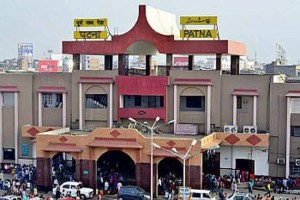
slipped into the hands of the Nawabs of Bengal, who maintained its commercial prosperity.
Patna during the 17th century was the centre of international trade. The Britishers started with a factory in Patna in 1620 for the purchase and storage of calico and silk. Soon it became a trading point for saltpetre, urging other European powers like the French, the Danes, the Dutch and that Portuguese to compete in the lucrative business. Various European factories and godowns started mushrooming up in Patna and it acquired a trading fame that attracted far off merchants, as observed by Peter Mundy in 1632, who calls this place, `the greatest mart of the eastern region’.
Bankipore Club is precisely the place where the Dutch are believed to have anchored their boats and the dance hall of the club is one of the original Dutch buildings. Today’s Patna College administrative block is said to be the Dutchman’s residence. Other important European landmarks are the Padri Ki Haveli, deemed to be the oldest church in Bihar dating back to 1772. Nearby is the Patna cemetery which was once the haveli of the Bengal nawabs. The cemetery is marked by an obelisk that covers the remains of the 47 Englishmen done to death by Samru, a French freebooter in the army of Nawaz Mir Qasim.
In the list of cold blooded murders, mention may be made of Nawaz Zainuddin Haibat Jung, the Governor of Bihar (1740-48) and father of Nawaz Siraj-ud-Daulah, who was most treacherously murdered by Murad Sher Khan (a Rohilla Afghan) as a revenge for killing another Rohilla in a battle. Haibat’s body was cut in two and suspended on the eastern and western gates of Patna. This was followed by the loot and plunder of Patna by the Rohillas. The body of Nawab Haibat Jung was buried at Begumpur, close to the Patna city railway station. The tomb deserves a visit for its beautiful black stone jali work, though it lies in the centre of a paddy field while the adjoining garden, mosque and Imambara have given way to fields.
The first nawab of Oudh, Saadat Ali Khan lies buried at Patna, some distance from the main railway station. The surrounding wall and the screen provided by Safdarjung is hardly traceable. Another monument is the Imambara of Imam Bandi Begum whose tomb was once a beautiful piece of latticed wall.
The Government printing press at Gulzarbagh was the European godown for opium and next to it are the ruins of Panini’s ashram. Golghar is Patna’s granary built in 1786 by Captain John Garstin following a terrible famine in 1770, to serve as a state granary. A flight of steps winds round the 29 metre high building leading to the top from where one gets a fine view of the river Ganga and the city of Patna. It is an imposing landmark from where the distances are calculated in Patna.
Takht Harmandir is one of the sacred Sikh shrines, marking the birthplace of the 10th Guru, Govind Singh. The present five storeyed building was completed in 1957 though it was started by Maharaja Ranjit Singh. A little distance from the shrine is Mir Ashraf’s mosque dating back to 1773 and admired for its beautiful tank just outside the mosque. A unique and Patna’s only single domed mosque built during Shah Jehan’s period can be seen around the Mangal Talao. Mirza Masoom’s mosque, built in 1616 is appreciated for its beautiful black basalt door that possibly belonged to a Buddhist shrine as evident from its rich carving.
A decade later was erected Pathar ki Masjid by Pervez, the elder brother of Shah Jehan and the first Mughal prince to rule Bihar.
The walled city of Patna was provided with two gates called Purbi and Paschmi Darwaza. The Eastern gate is provided with a temple dedicated to Patan Devi the presiding deity of the city) while the Western gate is graced by the Chhoti Patan Devi temple. The temples have been newly constructed and the images are said to have been provided by Raja Maan Singh, the Mughal Governor during the times of Akbar.
Other places of interest in Patna include the Khuda Baksh Oriental Library, famous for its rare Arabic and Persian manuscripts, rich paintings and numerous volumes of rare books. Likewise the Patna Museum is a treasure house of stone sculptors dating back to the Mauryan period and other archaeological finds. Among the stone sculpture special reference may be made of the famous Chouri bearer of the Mauryan period, popularly called Didarganj Yakshi. Another captivating image is that of Shalabhanjika (late Maurya Sunga period) in her full youthful posture, twisting the branches of the Sala tree. One of the museum’s prized exhibit is the 16 metre long fossilized tree and another priceless object that has just been included in the display section are the ashes of Lord Buddha. Seven life sized statues in front of the Old Secretariat revive the memory of brave young men who sacrificed their lives in August 1942 in the historic struggle for independence. Sadaqat Ashram is another landmark which later became the retreat of Dr. Rajendra Prasad.
The best time to visit Patna is between October and March preferably the festive occasion of Chaath (a week after Deepavali) or during the cattle fair at Sonepur which is not very far from Patna.
How to Reach?
by Air: Patna being the capital city of Bihar has excellent air connection to many important Indian cities like, Delhi Mumbai Kolkata. Several Airlines serve this airport with regular flights.
by Road: An extensive road network links Patna to major cities and tourist detonations within Bihar and neighboring states. Bodhgaya, Rajgir, Ranchi, Siliguri are conveniently located by road to Patna.
by Rail: Patna is a key railway station in the Eastern Railway division in India. Many important trains links the city to other significant railway stations all over India, like Kolkata, Delhi, Varanasi, Siliguri (New Jalpaiguri).
SHOPPING IN PATNA: If you are a passionate shopper, shopping in Patna may turn out to be a delightful experience.
The region of has a quite rich tradition of handicrafts. The skilled artisans of Bihar have over ages perfected the art of Stone and bead-jewellery, Stone pottery etc. these are quite
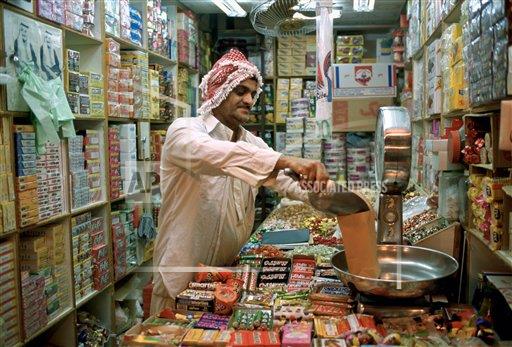
popular with those who go for shopping in Patna.
Check out artifacts like: hand-painted wall hangings, miniatures in paper and leaves, appliqué work on fabric while shopping in Patna. Wooden stools, Leather goods should also feature in your shopping cart in Patna.
Madhubani painting is a famous handicraft of Bihar that has gone places. Mostly practiced by the Bihari women folk, the school of painting illustrates mythological themes, incorporating images of local deities as well as Hindu gods and goddesses. Do not forget to pick up an item or two of while shopping in Patna. These artifacts serve well to decorate the interior of your home or as souvenirs too.
There are a number of shopping areas in the city that make for fantastic shopping in Patna. Hang out at Maurya Lok Complex, Hathua Market, Patna Market where you would be able to able to explore the large variety of artifacts and compare the prices.
The shopping outlets of Khadi Gramudyog and Bihar Handloom & Handicrafts Emporium nearly dot over the cityscape. Happy shopping in Patna !!!

